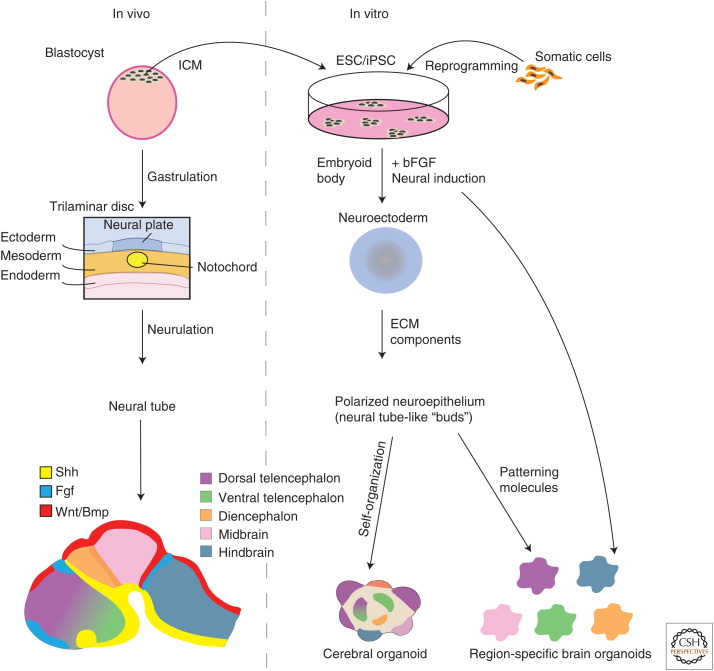Figure 1.
A comparison between in vivo and in vitro brain development. In vivo, the brain develops from the neural plate that folds in on itself to form a neural tube. In vitro, aggregates of embryonic stem (ESCs) or induced pluripotent stem cells (iPSCs) are guided toward a neuroectodermal fate and form neural tube-like buds upon the addition of extracellular matrix (ECM) components. In vivo, the brain is patterned into different regional identities by multiple morphogen gradients (e.g., Fgf, Bmp/Wnt, Shh) along the body axis. In vitro, cerebral organoids will self-organize and self-pattern into various brain regional identities in a heterogeneous manner. Alternatively, signaling molecules can also be added to pattern organoids into specific regional identities. (ICM) inner cell mass.

